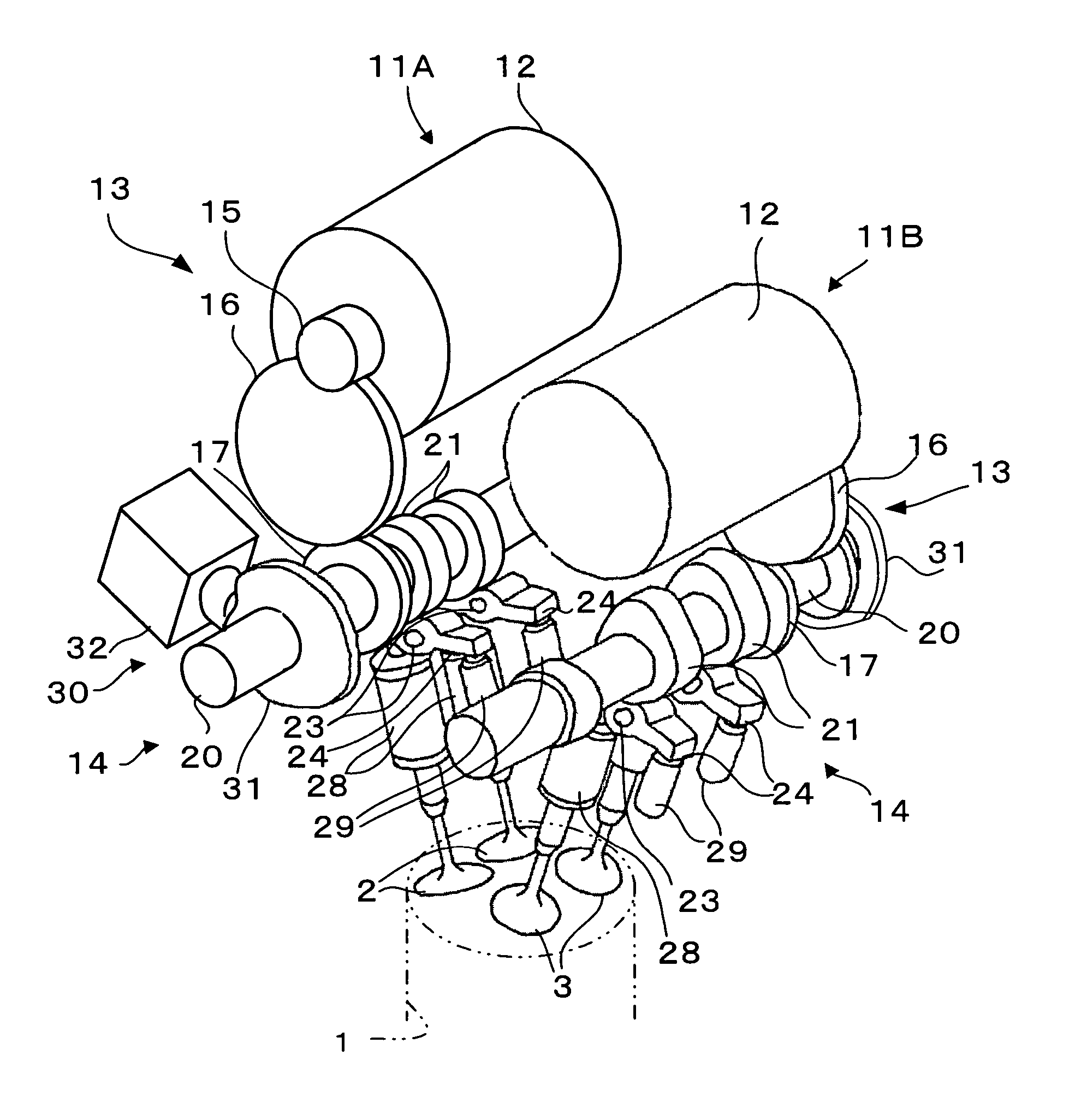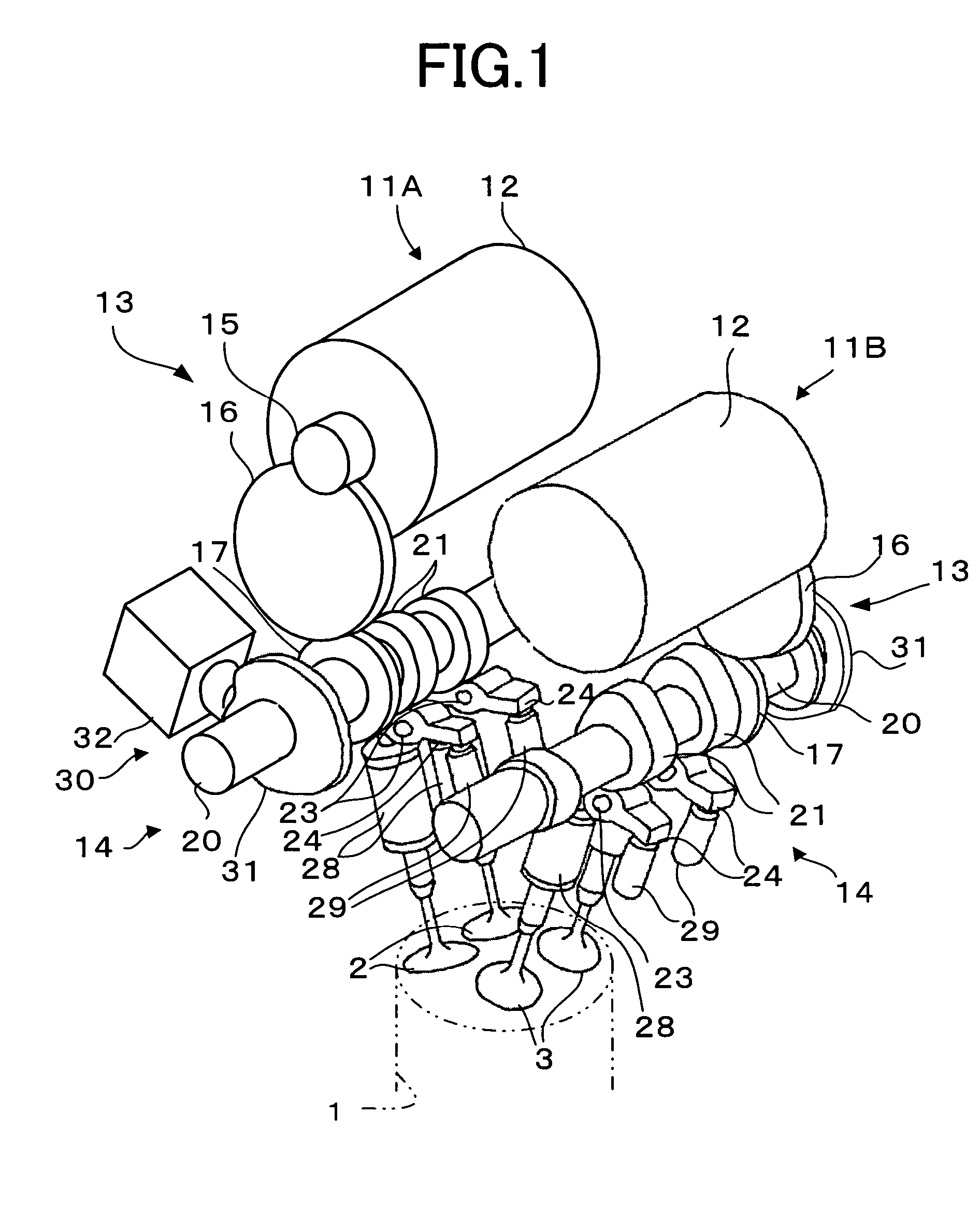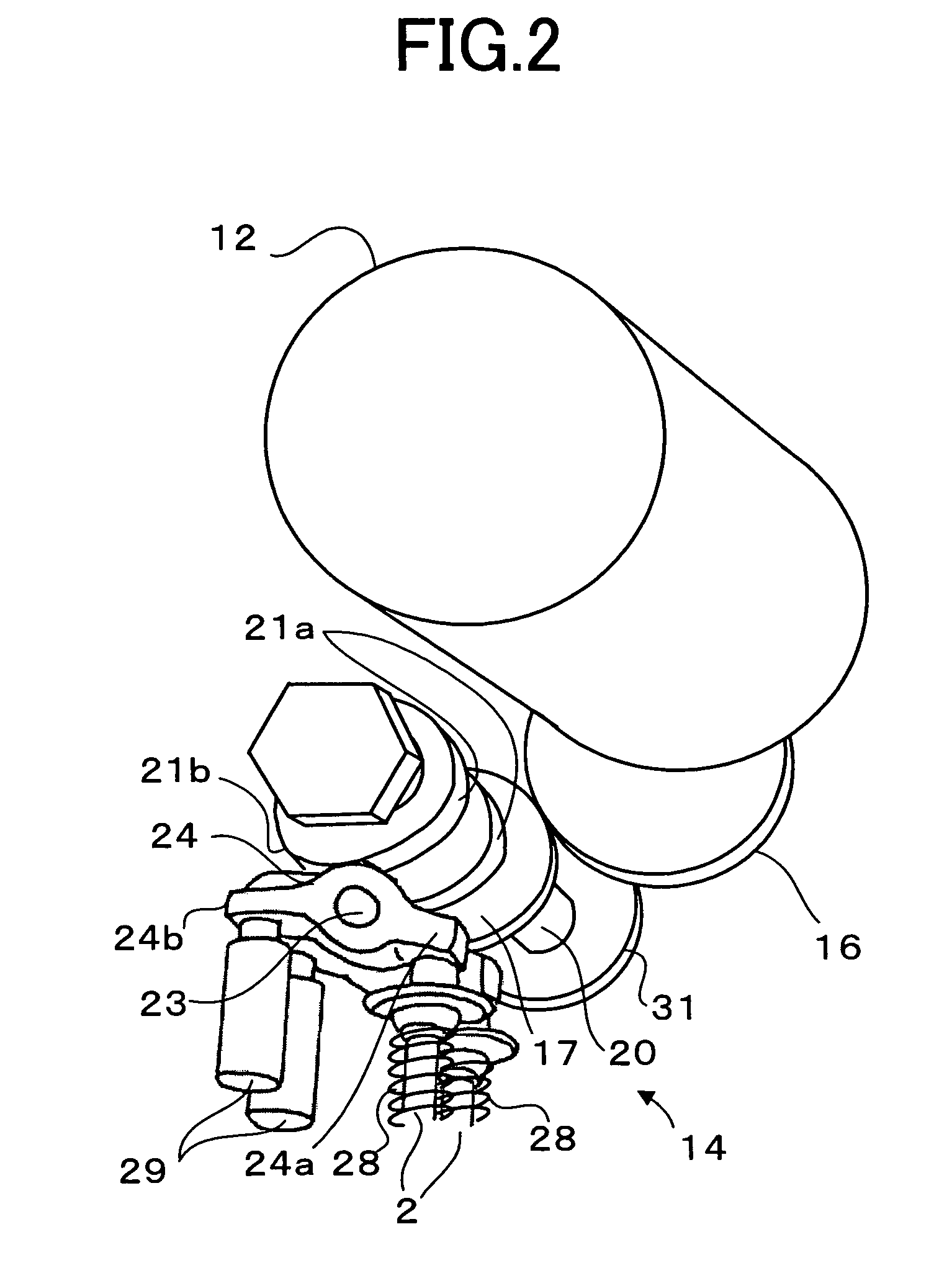Valve gear of internal combustion engine
a technology of internal combustion engine and valve gear, which is applied in the direction of machines/engines, valve drives, non-mechanical valves, etc., can solve the problems of increasing electric motor ratings and electric power consumption, and achieve the effect of reducing torque, reducing torque fluctuation, and reducing the output required for electric motors for driving the cam mechanism
- Summary
- Abstract
- Description
- Claims
- Application Information
AI Technical Summary
Benefits of technology
Problems solved by technology
Method used
Image
Examples
first embodiment
[0027]FIG. 1 shows an embodiment of a valve gear according to the present invention. Valve gears 11A and 11B in FIG. 1 are installed in a multiple cylinder reciprocal type internal combustion engine. In the internal combustion engine, two intake valves 2 of one cylinder 1 are driven by one valve gear 11A, and two exhaust valves 3 of the same cylinder 1 are driven so as to be opened and closed by another valve gear 11B. With regard to the other cylinders (not shown), the intake valves and the exhaust valves are driven so as to be opened and closed by the different valve gears 11A and 11B in the same manner. The valve gear 11A in an intake side and the valve gear 11B in an exhaust side basically have the same structure, and a description will be given below of the valve gear 11A in the intake side.
[0028]The valve gear 11A in the intake side is provided with an electric motor (hereinafter, referred to as a motor) 12 serving as a drive source, a gear train 13 corresponding to a transfer...
second embodiment
[0043]Next, a description of the second embodiment according to the present invention will be given with reference to FIGS. 6 to 8. According to the second embodiment, the cam profile of the opposite phase cam 31 is designed while taking into consideration an inertia force of a reciprocating part at the time when the intake valve 2 or the exhaust valve 3 is driven so as to be opened and closed. In this case, the mechanical structure of the valve gears 11A and 11B is the same as the first embodiment.
[0044]In the case of opening and closing the intake valve 2 or the exhaust valve 3 via the cam mechanism 14, the rocker arm 24, the valve spring 28 and the like are reciprocated according to the motion of the valve 2 or 3, whereby the inertia force is generated, and the inertia torque is applied to the cam mechanism 14 in addition to the valve spring torque. When the rotational speed of the internal combustion engine is low, the inertia toque is sufficiently small in comparison with the v...
PUM
 Login to View More
Login to View More Abstract
Description
Claims
Application Information
 Login to View More
Login to View More - R&D
- Intellectual Property
- Life Sciences
- Materials
- Tech Scout
- Unparalleled Data Quality
- Higher Quality Content
- 60% Fewer Hallucinations
Browse by: Latest US Patents, China's latest patents, Technical Efficacy Thesaurus, Application Domain, Technology Topic, Popular Technical Reports.
© 2025 PatSnap. All rights reserved.Legal|Privacy policy|Modern Slavery Act Transparency Statement|Sitemap|About US| Contact US: help@patsnap.com



